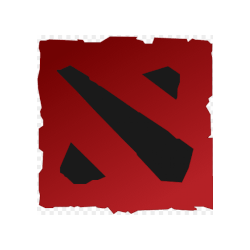
FISSURE PLAYGROUND 2
Contents
Recomended bookmakers
The FISSURE PLAYGROUND emerged as a series of independent, high-prize events in the post-DPC era. After the game developer Valve discontinued the DPC circuit in 2023, the competitive scene became more fragmented, so tournaments like FISSURE PLAYGROUND are helping maintain structure and excitement between Majors, Riyadh Masters, and TI. FISSURE offers one of the biggest non-Valve purses in the Dota 2 scene, attracting Tier-1 organizations while also opening the door for Tier-2 teams and emerging regions.
Where Will the FISSURE PLAYGROUND 2 Be Held?
The venue, or even the city, hasn’t yet been announced/specified. It’s known that 16 teams will participate in a LAN/offline environment.
The total prize pool is US$1 million. Here’s the breakdown of how it’s allocated:
| Place | Prize (USD) |
| 1st | $400,000 |
| 2nd | $170,000 |
| 3rd | $100,000 |
| 4th | $75,000 |
| 5th-6th | $50,000 each |
| 7th-8th | $35,000 each |
| 9th-11th | $15,000 each |
| 12th-14th | $10,000 each |
| 15th-16th | $5,000 each |
Which Teams Will Take Part in the FISSURE PLAYGROUND 2?
We couldn’t find confirmed info yet on which teams are participating in the FISSURE PLAYGROUND 2, or exactly how they all qualify.








Out of 16 teams, 11 teams will be invited directly. The remaining five teams will come via regional spots, one each from all five acknowledged regions. Certain news articles are noting that five teams will be determined through regional qualifiers. Some regions have held open or closed qualifiers for the first FISSURE PLAYGROUND (e.g., Southeast Asia Open Qualifier, etc.), which suggests that such a qualifier format is likely to be used in this instance.
Features of the FISSURE PLAYGROUND 2
The tournament will have two main stages: Group Stage — which begins with the tournament start (Oct 24), and Playoffs — follow after the group stage and run until the end (Nov 2).
Format & match rules:
Group Stage
- Uses a modified Swiss system with 16 teams.
- All matches in the group stage are Best-of-3 (Bo3).
- After the Group Stage, the top 8 teams advance to the Playoffs, and the rest are eliminated.
Playoffs
- Double-elimination bracket.
- All matches except the Grand Final are Bo3. Grand Final is Best-of-5 (Bo5).
Who’ll Win the FISSURE PLAYGROUND 2?
Since official team lists for FISSURE PLAYGROUND 2 haven’t been released yet, we won’t put even speculative previews, although that could’ve been done based on general trends and recent performances. But confirmed lineups are necessary to do this task seriously.
We weren’t able to find any specific platforms confirmed yet for betting on FISSURE PLAYGROUND 2. Historically, betting sites like Thunderpick have offered odds and previews for FISSURE tournaments. For the upcoming edition, the best approach would be to monitor top eSports betting sites such as BetBoom, GG.Bet, Stake, Bet365, etc. Once the participant list and match schedule are finalized, these platforms are likely to offer moneyline bets, map handicaps, match winner odds, and possibly in-play/live betting.
For the FISSURE PLAYGROUND 1 (January through February 2025 in Belgrade, Serbia), the peak viewership was around 700,000 concurrent viewers.
The FISSURE PLAYGROUND 2 can be watched on the following platforms:
- Twitch — likely via the official FISSURE Dota 2 channel (they’ve streamed past events there)
- YouTube — previous editions of FISSURE PLAYGROUND have full matches and highlights available under official channels.
Pros and Cons of the FISSURE PLAYGROUND Compared to Other Dota 2 Tournaments
| Pros | Cons |
| Strong prize pool of $1M makes it attractive for both Tier-1 and Tier-2 teams. | Prize pool is smaller than Valve Majors ($3M) or The International (often $10M+), which still dominate the scene. |
| Format uses Swiss-system groups + double-elimination playoffs, giving fairer chances and multiple matchups. | Swiss format can feel complicated for casual viewers compared to simpler formats (round-robin groups at DreamLeague, TI qualifiers, etc.). |
| A mix of 11 invited teams + 5 regional qualifiers ensures a balance of elite rosters and emerging squads. | Heavy reliance on invites reduces the competitive ‘open’ feel — unlike Valve’s all-qualifier model for TI. |
| Regional slots provide visibility for underrepresented regions like SEA, SA, and CIS. | Only one slot per region, unlike TI or Riyadh Masters, where stronger regions get multiple entries. |
| Matches are streamed on Twitch and YouTube with multilingual coverage, improving accessibility. | Global reach is still lower than Valve-backed Majors or TI, which dominate mainstream esports coverage. |
| Building identity as an innovative ‘Playground’ brand, with Belgrade edition reaching ~700K peak viewers. | Still relatively new — lacks the prestige, legacy, and tradition of The International or ESL One. |
| Offers mid-tier teams valuable opportunities to face top-tier rosters outside of Valve events. | Calendar congestion may cause top teams to prioritize ESL/Valve/BLAST events instead. |






